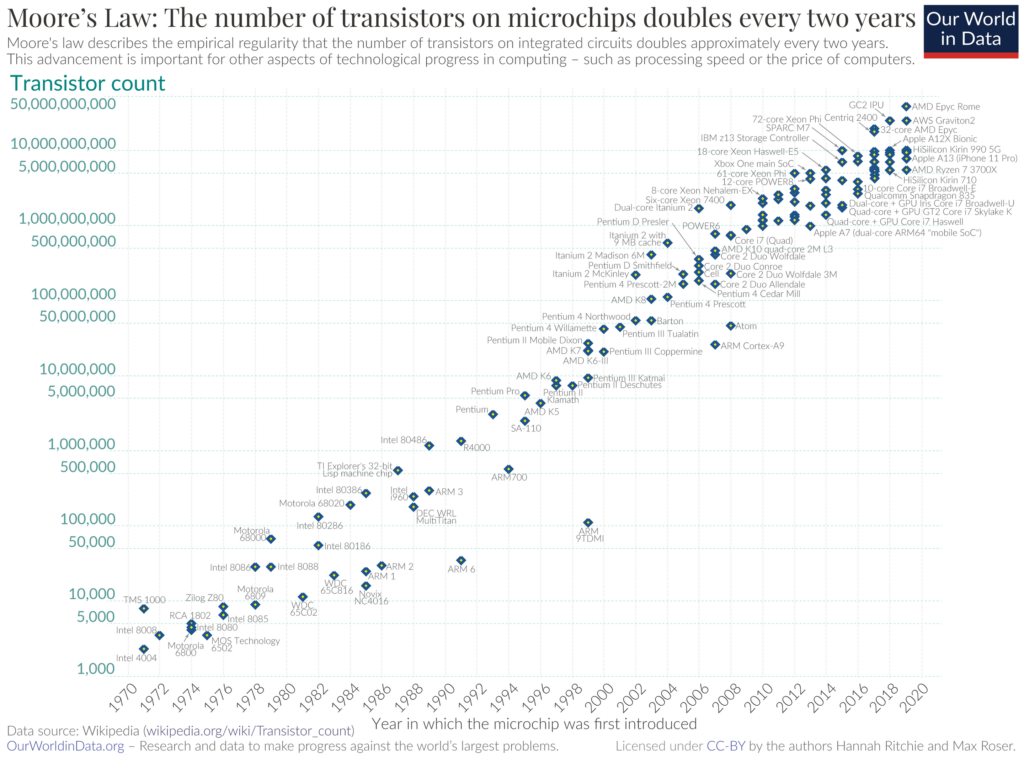“In order to survive and win in the ever-changing world, keep updating yourself.” – Gordon Moore
Gordon was born during the Great Depression. His dad was the local sheriff. They lived in the small farming and ranching town of Pescadero, California. He was a quiet kid, but he was optimistic and hopeful. He loved the great outdoors and would often go fishing or play at the Pescadero Creekside Barn. He also love science. His parents bought him a chemistry set on Christmas one year which eventually inspired him to pursue a degree in Chemistry. He earned a Bachelor of Science at UC Berkeley and went on to receive his PhD at Caltech.
After college, Gordon joined fellow Caltech alumni and co-inventor of the transistor, William Shockley, at Shockley Semiconductor Laboratory. Unfortunately, things didn’t go well there. Shockley was controlling and erratic as a manager. Gordon and most of the other top scientists left after a year and joined Sherman Fairchild to start a new company. At Fairchild Semiconductor, Gordon and his friend, Robert Noyce, help devise a commercially viable process to miniaturize and combine transistors to form whole circuits on a sliver of silicon. This led to the creation of the first monolithic integrated circuit, the IC.
Gordon and Robert eventually left Fairchild and decided to form their own company. They would focus on integrated circuit development so they named their company, Integrated Electronics. They started making memory chips and focused the company on high speed innovation. The company did extremely well at first but also faced some difficult times that required significant changes. All the while, Gordon focused on pushing things forward and taking risks. They had to constantly reinvent themselves to survive. The company was later renamed to something that you might be familiar with, Intel.
Gordon believed that the key to their success was staying on the cutting edge. That led to the creation of the Intel 4004, the first general purpose programmable processor on the market. Gordon had observed that the number of transistors embedded on the chip seemed to double every year. He projected that trend line out into the future and made a prediction that the number of transistors would double at regular intervals for the foreseeable future. This exponential explosion that Gordon predicted would power the impact, scale and possibilities of computing for the world for years to come. Of course, you know that famous prediction. It was later named after him, “Moore’s Law”.
In 1971, the first Intel 4004 processor held 2,300 transistors. As of this year, the Intel Sapphire Rapids Xeon processor contains over 44 billion. The explosion of capability powered by science continues to accelerate the technology that enhances and amplifies our daily lives. This past Friday, Gordon Moore passed away at his home in Hawaii, but the inspiration, prediction and boundless technical optimism that he started continues to live on.
I know there is a lot going on right now. We are facing uncertainty and considerable change. It can create fear and apprehension. Technology is constantly being disrupted as well as its role, and our roles, in applying it to our businesses. While not comfortable, we need to embrace the change. Lean in and learn. We need to constantly find new ways to reinvent ourselves and what we do. Embrace the exponential possibility of the future! We can do this!

